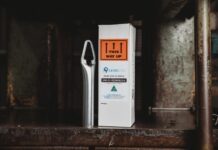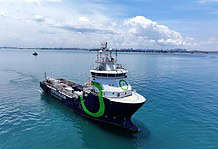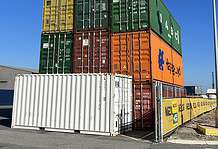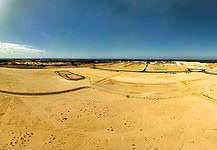All images: Newmont.
BY ELIZABETH FABRI
FRESH from completing a $US120 million expansion at its Tanami operation, Newmont is spending big on a new power project that will see Tanami shift to natural gas from a current reliance on diesel fuel.
Newmont has a lot to be proud of at its Tanami gold mine in the Northern Territory.
Since 2012, Tanami has more than doubled gold production and cut costs by two thirds.
In August, the miner completed a mine expansion to increase production by 80,000 ounces per year, lower all-in sustaining costs to between $US700/oz and $US750/oz, and add a further three years to mine life.
Newmont’s Australia production was now expected to reach between 1.5 million ounces and 1.7moz in 2018, in part helped by this increased output at Tanami (FY18 production of between 425,000oz -475,000oz of gold).
But a spell of wet weather during early 2017 brought other operational issues to the fore.
Up until now, Tanami – which is one of the most remote mines in the country – has been powered by diesel generators, like many of its peers. But the fuel can only be trucked to the mine, meaning if roads are blocked no diesel could reach the operation.
This was what happened in January and February last year, when widespread rain hit the Territory.
Newmont Australia project director Francois Hardy said travel restrictions prevented essential deliveries of fuel to the site and led to a ramp down in mining and processing activities.
“Due to the remoteness of the site, there is always between six and eight weeks’ worth of diesel stocks; historically this has been adequate,” Mr Hardy said.
“Tanami experienced the wettest December, January and February on record, with 743.4mm of rain between 21 December 2016 and 10 February 2017. The first 39 days of 2017 exceeded the average annual rainfall for the region.
The incident was unlikely to occur again in the near term, but as Newmont looks to further expand the underground operations, more power and greater energy security will be required for Tanami.

Roads leading to Tanami during the 2017 rainfall event.
Power plans
Newmont recently unveiled plans to build a new Tanami power project that will see a shift from its current reliance on diesel fuel to natural gas.
Newmont’s plans involve building two power stations and a 450km natural gas pipeline connecting the Tanami site to the Amadeus Gas Pipeline.
Besides offering power reliability during extreme weather events, the move to gas would also increase available power, lower power costs by about 20 per cent beginning in 2019, and reduce carbon emissions by 20 per cent.
“The project is expected to result in net cash savings of approximately $34 per ounce beginning in 2019,” Mr Hardy said.
“Capital costs are estimated at between $225 million and $275 million, with annual cash lease payments over a 10 year term beginning in 2019 with approximately $10 million of owner’s costs paid in 2018.
“The project IRR is expected to be greater than 50 percent at $0.75 AUD.”
While the project was still in the permitting stage, contracts have been awarded to Power and Water Corporation for the gas supply, AGIT for the gas transport, and a power purchase agreement has been signed with Zenith.
Mr Hardy said the projects existing diesel power stations will be decommissioned following the build, and the two new power stations will include hybrid generators, that can run on either gas or diesel.
Further ahead, Mr Hardy flagged solar power an additional future source of power for the mine.
“Newmont will continue to investigate new technologies and alternatives, this includes the opportunity to utilise solar power, particularly at Tanami where the remote nature of the site means it needs to be self-sufficient,” he said.

Tanami Expansion 2
A second expansion at Tanami was also in the planning stages.
Tanami expansion 2 focuses on maximising value from the deeper orebody (from 1200m to 2600m below surface) to significantly increase mine life.
It would involve construction of a vertical shaft and associated ventilation and optimising processing plant capacity.
Pre-feasibility studies were now underway to improve orebody knowledge and optimise the approach to material handling, ventilation, and refrigeration.
“The project will be a significant investment in extending the life of the mine,” Mr Hardy said.
“While in pre-feasibility stage, Tanami Expansion 2 holds the potential to extend mine life by 12 years to 2040, for an investment of between $600 million and $700 million.”
Newmont said it expected to reach a funding decision in the second half of 2019, with construction to take about two years.
Mr Hardy said Newmont will continue to invest in exploration across the region, and if satellite deposits were found “would look to permitting them if economically viable”.
“Newmont has built Tanami into a long life, low cost operation, leveraged for future growth,” he said.
“It’s a key asset in Newmont’s portfolio and has been a significant contributor to the Northern Territory since 2002.”







































